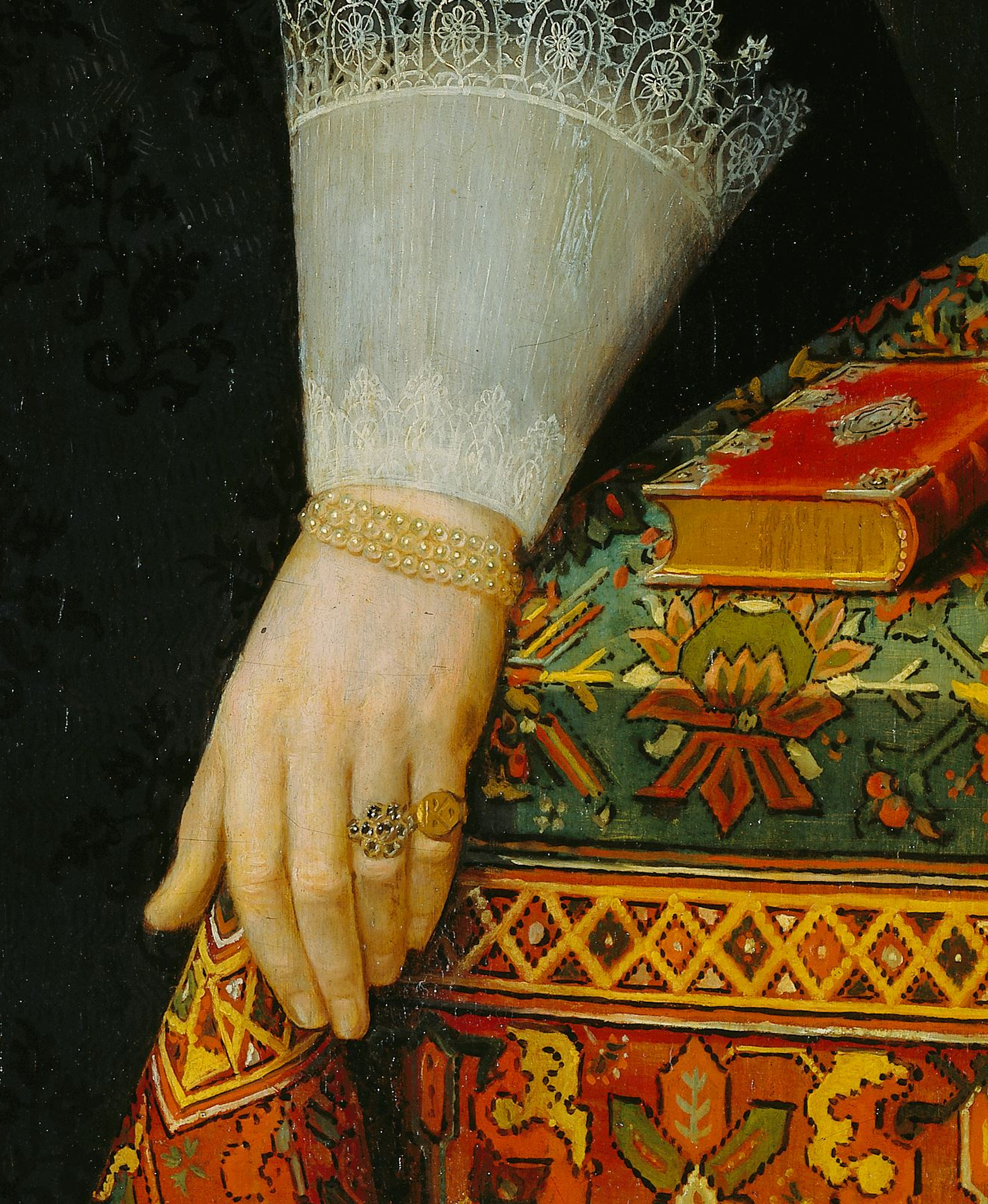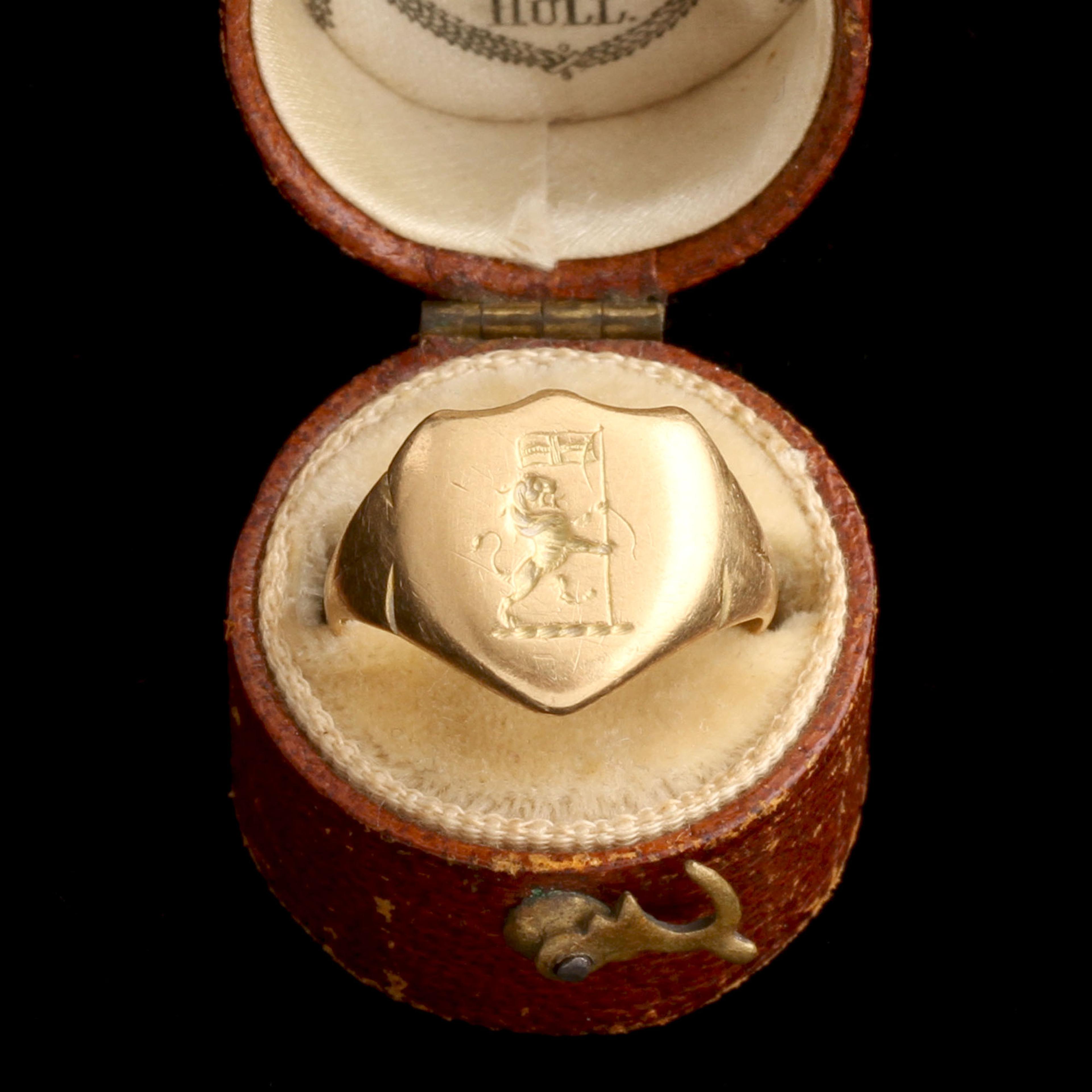Chivalry wasn't dead in England at the beginning of the 20th century. Even though the modern world was surging forward (with the first mechanized war on the horizon), the imagination of the time was still obsessed with the banners, knights, and maidens of the Middle Ages. The Pre-Raphaelites had spent decades painting knights and tragic princesses: this imagery lingered in the Edwardian imagination. William Morris decorated homes with patterns drawn from medieval manuscripts, and stained-glass windows glowed with shields and saints. The pageantry of coronations had kings holding scepters and wearing ermine-trimmed robes like Ye Olde Days. It's in that climate that this 1907 Chester-marked signet ring was made. On a shield-shaped face, a lion rampant supports an English flag. In heraldic tradition, this beast's standing posture (rising on hind legs with forepaws extended) signals readiness for battle and vigilance in defense of one's honor. Within a few years the First World War would test these ideals.
thedetails
- Materials
18k gold (marked)
- Age
Chester assay marks for 1907
- Condition
Very good - minor surface wear commensurate with age and use
- Size
6.5, can be resized; 1/2" head, 1/8" shank
Need more photos?
Send us an email to request photos of this piece on a model.

Aboutthe
EdwardianEra
1900 — 1910
The jewelry tended toward airy lightness, often in the form of lacy filigree. The world was changing rapidly, but lots of the jewelry still reflected the Victorian ideals of decorum and femininity. Ancient Roman and Greek influences remained popular. “White” jewelry became popular as plentiful deposits of platinum were discovered in Russia and improved smelting technology made it possible for jewelers to work in the noble metal. Platinum was seldom used by jewelers in earlier years owing both to its scarcity and high melting point. The jewelry trade took advantage of its rigid strength to create opulent openwork settings for increasingly brilliant diamonds. The old European cut was perfected, rounder and squatter than old mine. This took stone-cutting one step closer to the mathematically perfect round brilliant cut, which is the most popular diamond cut today. The now-iconic square Asscher cut was patented in 1902. Hot on the heels of platinum, the alloy mixture that produces white gold was formulated and patented in 1915 in New York City. With Europe in the grip of WW1, the American jewelry industry was poised to become a world leader and innovator.
please note:Terms of Sale
Antiques can be returned unworn and in original condition within 10 days of delivery for an exchange or refund minus the cost of shipping. Once a piece has been altered, including ring re-sizing, it is FINAL SALE.




